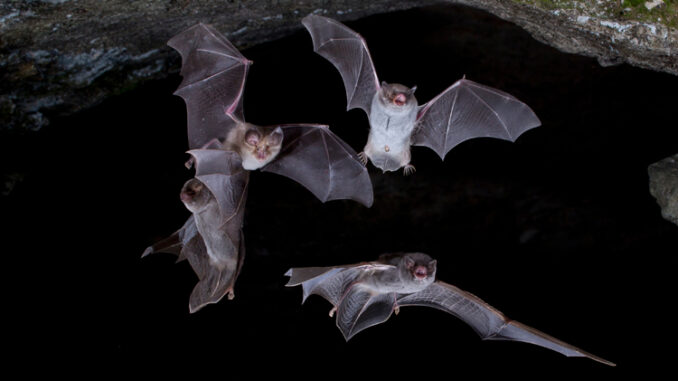
Humans need bats. Bats are often misunderstood animals. They are spooky symbols associated with Halloween, but bats are also intelligent creatures with unique skills and helpful habits. There are over 1,400 species of bats, which is twenty percent of all mammal species. Bats live in safe places called roosts. Some bats like hollow trees, others prefer caves. Bats are the only mammals that can fly. Bats use echolocation. They make high pitch clicking sounds that echo when they bounce off objects. Bats have super sensitive hearing. They listen for their echos, and use them to understand where things are in the dark. Bats are nocturnal, which means they are active at night. Echolocation helps bats locate and hunt their prey. A bat’s super sensitive hearing is strong enough to detect a beetle walking on a leaf. That’s important when bugs are your primary meal. Bats are insectivores, meaning they eat insects. They play a huge role in protecting farmers’ crops from hungry bugs. Bats can eat up to 1,000 insects in an hour! It is estimated that without bats controlling insect populations, the harvesting of cocoa beans would decrease by thirty percent. That means less chocolate!
Not only do bats help the environment through pest control, but they also help with pollination and seed dispersal. Bats drink nectar from flowering plants, moving pollen from one place to another. Bats also eat seeds from fruit. Seeds dropped by bats traveling long distances help with new growth. Understanding bats and protecting their habitats is essential to the health of our ecosystems.
What Can You Do? Some species of bats are becoming endangered. Research to find out why. What can you do in your area to help?
Reading Response Click on this link to respond to your reading. Print out the response page or upload it to your classroom site.
Photo Credit: Agami Photo Agency/Shutterstock



